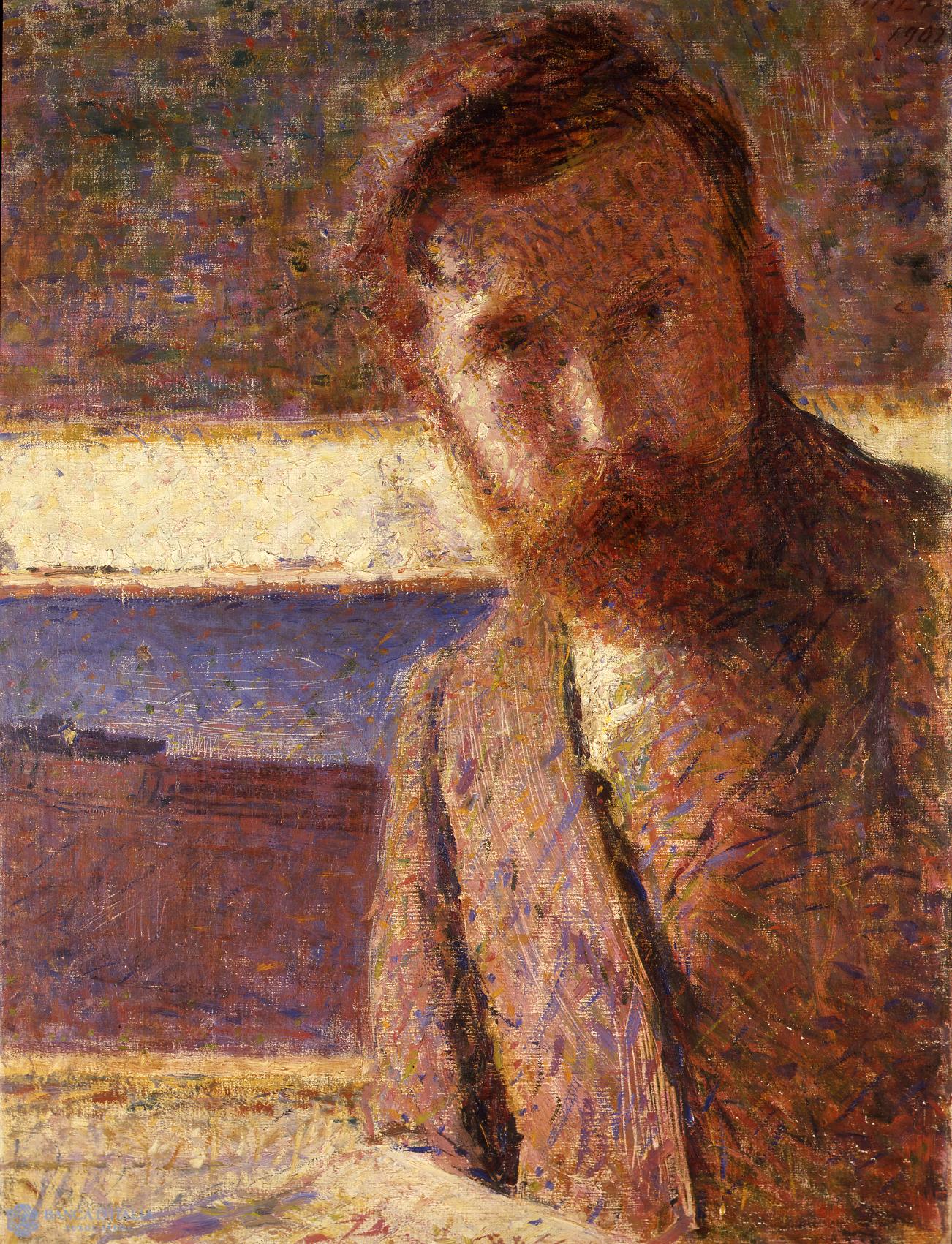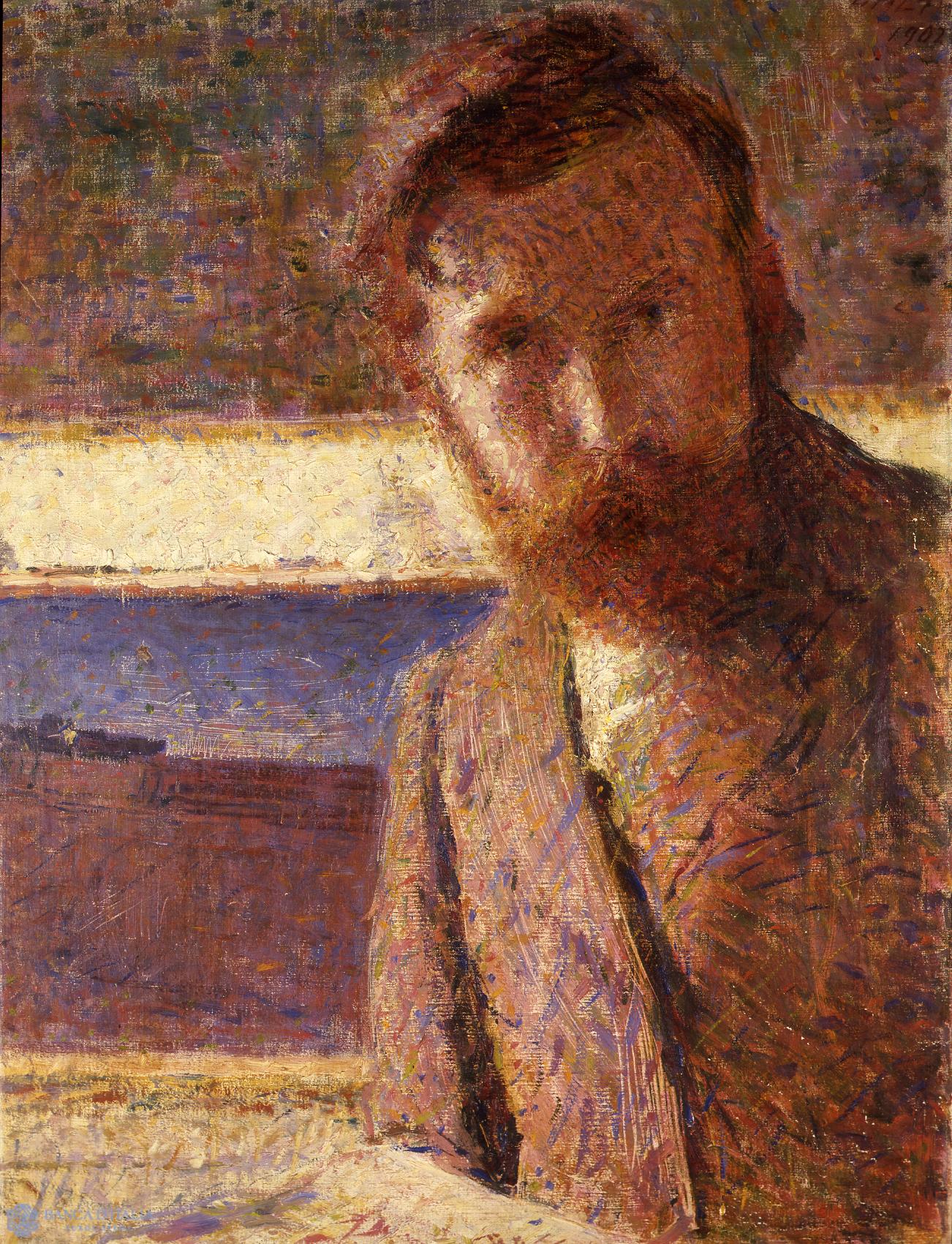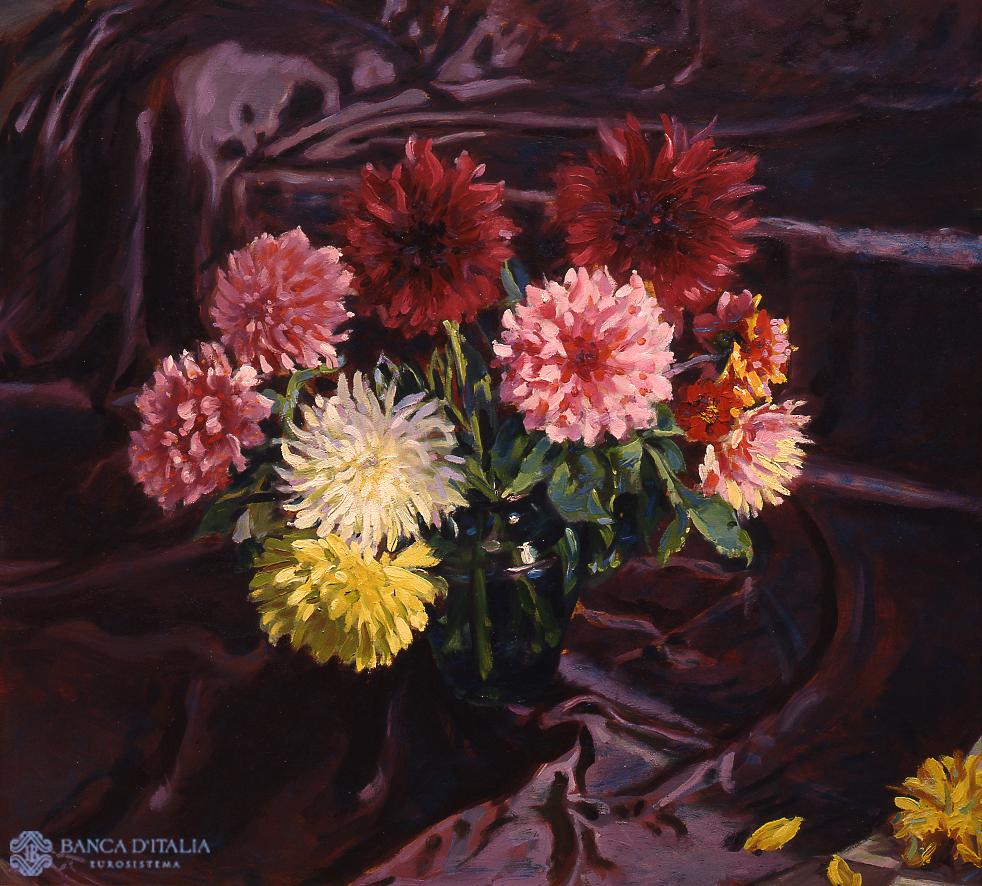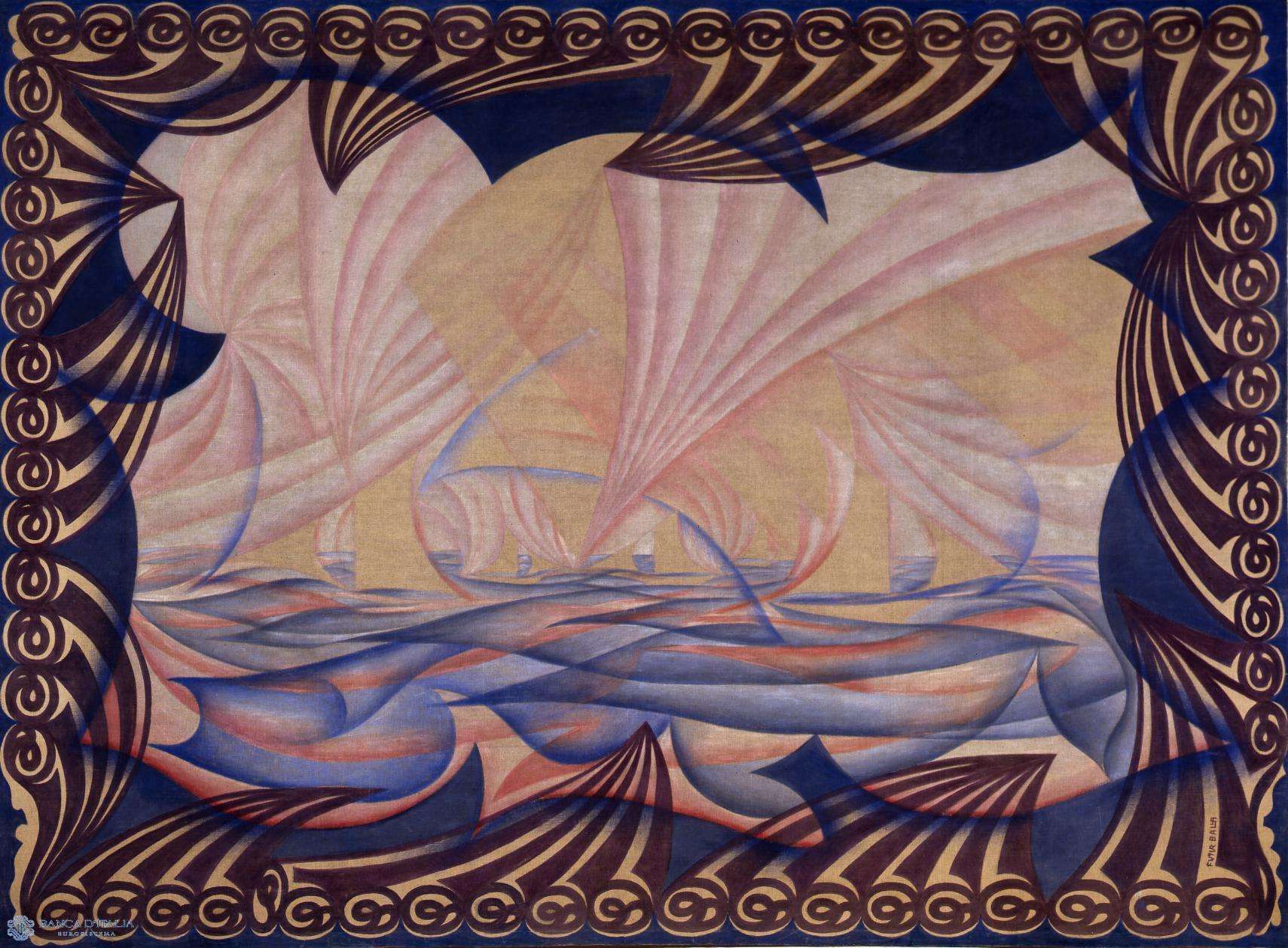Giacomo Balla was born in 1871 in Turin where he came into contact with the work of Pellizza da Volpedo and Morbelli from whom he acquired both his artistic interest in Divisionism, which he tainted with Fontanesi’s colour blends, and his humanitarian interest in the problems of the marginalized classes.
He moved to Rome in 1895. During his stay in Paris in 1900 he completed his training following the work of Seurat and Eugène Carrière. While in Paris, Balla also dedicated considerable attention to his interest in photography, which had already stirred him in his years in Turin, and then in Rome he came into contact with two of the most famous photographers in Italy at the time, Filippo Rocci and Giuseppe Primoli. In Rome he exhibited portraits and humanitarian subjects which revealed his sincere engagement with the social life of the time, trying to avoid both the broad prospective lines, which had constrained late 19th century painting, and the symbolism typical of Italian Divisionism. He taught the young Boccioni and Severini, who persuaded him to sign the Technical Manifesto of Futurist Painting in 1910. At first his paintings reproduced the movements of bodies in space along the lines of Marey’s and Muybridge’s experimental photography. Later, in 1913, he represented the theme of the moving automobile through repetition of the stylized shapes of the wheels and of triangles which alluded to the penetration of speed into space. This idea drove him towards an abstract approach which he was to develop in the years to come. Around 1930 he abandoned Futurism and returned to the style of post-impressionism in his painting. He died in Rome in 1958.
Giacomo Balla
Giacomo Balla (Turin 1871 - Rome 1958)
20th century AD

Compiler
Augusta Monferini






